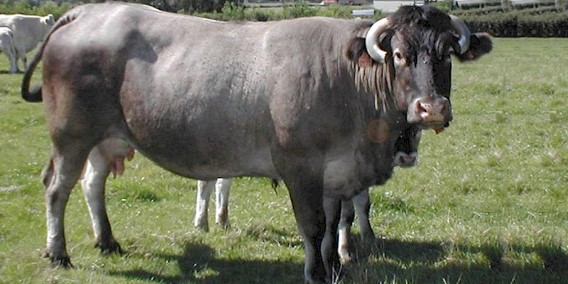Bazadaise (also called Bazadais) are French cattle raised
primarily for meat production. They originated in the low-laying areas to the
south of the River Garonne near that town. But they get their name from the
town of Bazas in the department of the Gironde, in the Nouvelle-Aquitaine
region of south-western France.
It is believed that they may be the result of the
inter-breeding of local cattle breeds of Aquitaine cattle with other local
breeds. They were previously used as a draught animal. A festival is held each
year named the Fete des Boeufs Gras for presenting the fattened Bazadaise stock
and their meat.
Their meat is heavily marbled and renowned for its
tenderness and flavor. Their total numbers was nearly 60,000 head in 1940. But
their total numbers declined rapidly in the years after the Second World War,
when mechanization of agriculture and more extensive cultivation of cereal
crops in the region. There were only 700 cows left by 1970, and efforts for
recovering and conserving the breed began. Their total number increased
gradually and there were about 3,400 cows in more than 140 farms in 2013. A
herdbook for the breed was established on 31 July 1896. Currently the breed is
available in many countries and has been exported to Chile, Spain, Australia
and the United Kingdom.
They are medium to large and usually uni-colored grey, with
some variations due to age and gender. Both bulls and cows usually have horns,
and their horns are incurved and often down turned. The horns are waxy yellow
at the base and usually black at the tips.
The average height of the Bazadaise cows is around 140 cm,
and around 145 cm for the bulls. The mature bulls on average weight around 1000
kg.
